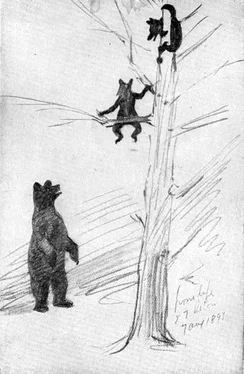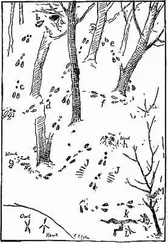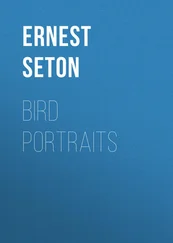Ernest Seton - Wild Animals at Home
Здесь есть возможность читать онлайн «Ernest Seton - Wild Animals at Home» весь текст электронной книги совершенно бесплатно (целиком полную версию без сокращений). В некоторых случаях можно слушать аудио, скачать через торрент в формате fb2 и присутствует краткое содержание. Год выпуска: 2009, Жанр: Природа и животные, на английском языке. Описание произведения, (предисловие) а так же отзывы посетителей доступны на портале библиотеки ЛибКат.
- Название:Wild Animals at Home
- Автор:
- Жанр:
- Год:2009
- ISBN:нет данных
- Рейтинг книги:5 / 5. Голосов: 1
-
Избранное:Добавить в избранное
- Отзывы:
-
Ваша оценка:
- 100
- 1
- 2
- 3
- 4
- 5
Wild Animals at Home: краткое содержание, описание и аннотация
Предлагаем к чтению аннотацию, описание, краткое содержание или предисловие (зависит от того, что написал сам автор книги «Wild Animals at Home»). Если вы не нашли необходимую информацию о книге — напишите в комментариях, мы постараемся отыскать её.
Wild Animals at Home — читать онлайн бесплатно полную книгу (весь текст) целиком
Ниже представлен текст книги, разбитый по страницам. Система сохранения места последней прочитанной страницы, позволяет с удобством читать онлайн бесплатно книгу «Wild Animals at Home», без необходимости каждый раз заново искать на чём Вы остановились. Поставьте закладку, и сможете в любой момент перейти на страницу, на которой закончили чтение.
Интервал:
Закладка:
VIII
The Squirrel and His Jerky-tail Brothers
You remember that Hiawatha christened the Squirrel "Adjidaumo"—"Tail-in-air" and this Tail-in-air was chattering overhead as I sat, some twenty-five years ago, on the shore of the Lake of the Woods with an Ojibwa Indian, checking up the animals' names in the native tongue. Of course the Red-squirrel was early in our notice.
"Ad-je- daw -mo" I called it, but the Indian corrected me; "Ah-chit-aw- mo " he made it; and when I translated it "Tail-in-air" he said gravely, "No, it means head downward." Then noting my surprise, he added, with characteristic courtesy, "Yes, yes, you are right; if his head is down, his tail must be up." Thoreau talks of the Red-squirrel flicking his tail like a whip-lash, and the word "Squirrel," from the Latin " Sciurus " and Greek " Skia-oura " means "shady tail." Thus all of its names seem to note the wonderful banner that serves the animal in turn as sun-shade, signal-flag, coverlet, and parachute.
THE CHEEKY PINE SQUIRREL

A wonderfully extensive kingdom has fallen to Adjidaumo of the shady tail; all of Canada and most of the Rockies are his. He is at home wherever there are pine forests and a cool climate; and he covers so many ranges of diverse conditions that, responding to the new environments in lesser matters of makeup, we have a score of different Squirrel races from this parent stock. In size, in tail, in kind or depth of coat they differ to the expert eye, but so far as I can see they are exactly alike in all their ways, their calls and their dispositions.
The Pine Squirrel is the form found in the Rockies about the Yellowstone Park. It is a little darker in colour than the Red-squirrel of the East, but I find no other difference. It has the same aggressive, scolding propensities, the same love of the pinyons and their product, the same friends and the same foes, with one possible partial exception in the list of habits, and that is in its method of storing up mushrooms.
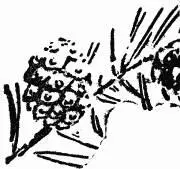
The pinyons, or nuts of the pinyon pine, are perhaps the most delicious nuts in all the lap of bountiful dame Nature, from fir belt in the north to equatorial heat and on to far Fuego. All wild creatures revel in the pinyons. To the Squirrels they are more than the staff of life; they are meat and potatoes, bread and honey, pork and beans, bread and cake, sugar and chocolate, the sum of comfort, and the promise of continuing joy. But the pinyon does not bear every year; there are off years, as with other trees, and the Squirrels might be in a bad way if they had no other supply of food to lay up for the winter.
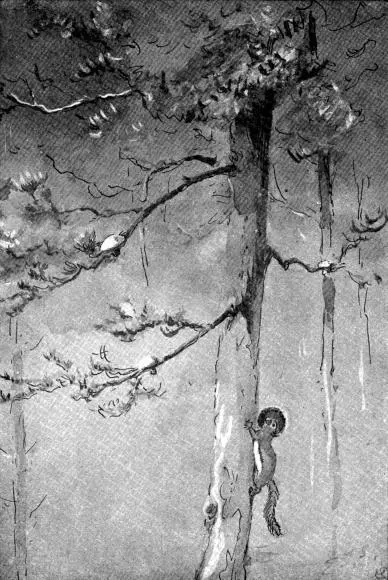
XXV. Red-squirrel storing mushrooms for winter use
Sketched from life in the Selkirk Mountains, by E. T. Seton
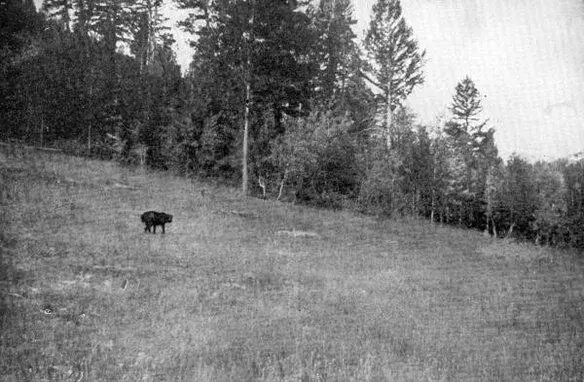
XXVI. Chink stalking the Picket-pin
Photo by E. T. Seton
A season I spent in the Southern Rockies was an off year for pinyons, and when September came I was shown what the Squirrels do in such an emergency. All through autumn the slopes of the hills were dotted with the umbrellas of countless toadstools or mushrooms, representing many fat and wholesome species. It is well known that while a few of them are poisonous, a great many are good food. Scientists can find out which is which only by slow experiment. "Eat them; if you live they are good, if you die they are poisonous" has been suggested as a certain method. The Squirrels must have worked this out long ago, for they surely know the good ones; and all through late summer they are at work gathering them for winter use in place of the pine-nuts.
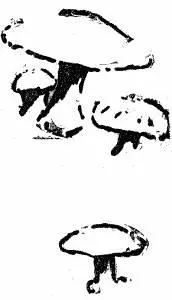
Now if the provident Squirrel stored these up as he does the pinyons, in holes or underground, they would surely go to mush in a short time and be lost. He makes no such mistake. He stores them in the forked branches of trees, where they dry out and remain good until needed; and wisely puts them high enough up to be out of reach of the Deer and low enough to avoid being dislodged by the wind.
As you ramble through the Squirrel-frequented woods, you will often come across a log or stump which is littered over with the scales fresh cut from a pine cone; sometimes there is a pile of a bushel or more by the place; you have stumbled on a Squirrel's workshop. Here is where he does his husking, and the "clear corn" produced is stored away in some underground granary till It is needed.
The Pine Squirrel loves to nest in a hollow tree, but also builds an outside nest which at a distance looks like a mass of rubbish. This, on investigation, turns out to be a convenient warm chamber some six inches wide and two or three high. It is covered with a waterproof roof of bark thatch, and entered by a door artfully concealed with layers and fringes of bark that hide it alike from blood-thirsty foes and piercing winter blasts.
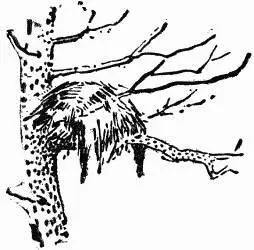
CHIPMUNKS AND GROUND-SQUIRRELS
The Red-squirrel is safe and happy only when in the tall trees, but his kinsmen have sought out any and every different environment. One enormous group of his great grandfather's second cousins have abandoned tree life altogether. They have settled down like the Dakota farmers, to be happy on the prairie, where, never having need to get over anything higher than their own front doorstep, they have lost the last vestige of power to climb. These are the Ground-squirrels, that in a variety of forms are a pest in gardens and on farms in most of the country west of the Mississippi.
Standing between these and the true Squirrels are the elegant Chipmunks, the prettiest and most popular of all the family. They frequent the borderland between woods and prairie; they climb, if anything is to be gained by it, but they know, like the Ground-squirrels, that Mother Earth is a safer retreat in time of danger than the tallest tree that ever grew.
THE GROUND-SQUIRREL THAT PLAYS PICKET-PIN
Conspicuous in its teeming numbers in the Yellowstone Park is the Picket-Pin Ground-squirrel. On every level, dry prairie along the great river I found it in swarms.

It looks much like a common Squirrel, but its coat has become more mud-coloured, and its tail is reduced by long ages of neglect to a mere vestige of the ancestral banner. It has developed great powers of burrowing, but it never climbs anything higher than the little mound that it makes about the door of its home.
The Picket-pin is an interesting and picturesque creature in some ways, but it has one habit that I cannot quite condone. In this land of sun and bright blue air, this world of outdoor charm, it comes forth tardily in late spring, as late sometimes as the first of May, and promptly retires in mid-August, when blazing summer is on the face of the earth, and the land is a land of plenty. Down it goes after three and one half short months, to sleep for eight and a half long ones; and since during these three and a half months it is above ground only in broad daylight, this means that for only two months of the year it is active, and the other ten, four fifths of its life, it passes in a deathlike sleep.
Читать дальшеИнтервал:
Закладка:
Похожие книги на «Wild Animals at Home»
Представляем Вашему вниманию похожие книги на «Wild Animals at Home» списком для выбора. Мы отобрали схожую по названию и смыслу литературу в надежде предоставить читателям больше вариантов отыскать новые, интересные, ещё непрочитанные произведения.
Обсуждение, отзывы о книге «Wild Animals at Home» и просто собственные мнения читателей. Оставьте ваши комментарии, напишите, что Вы думаете о произведении, его смысле или главных героях. Укажите что конкретно понравилось, а что нет, и почему Вы так считаете.
